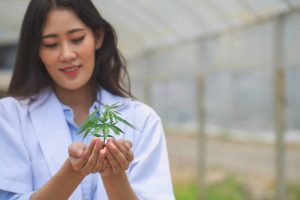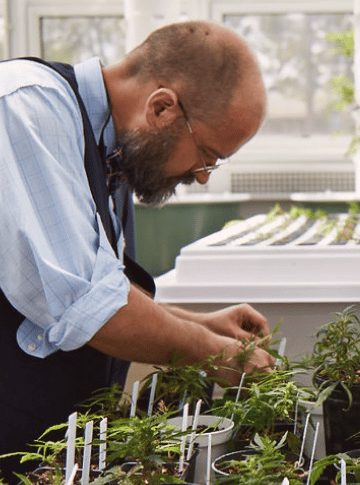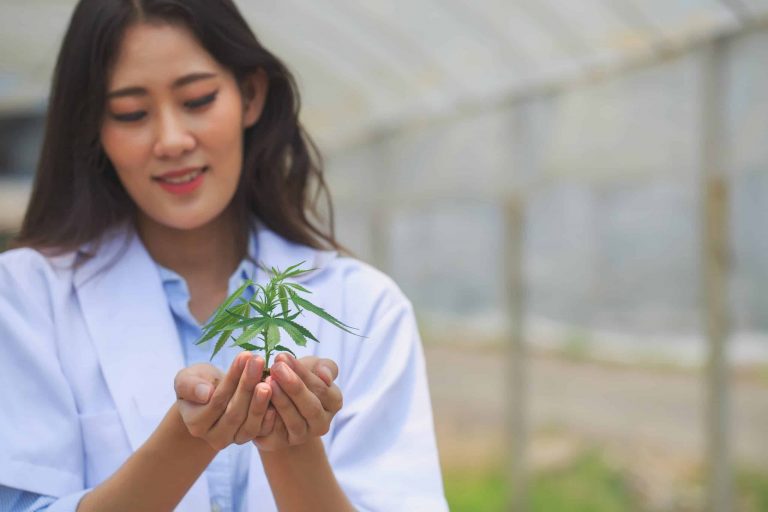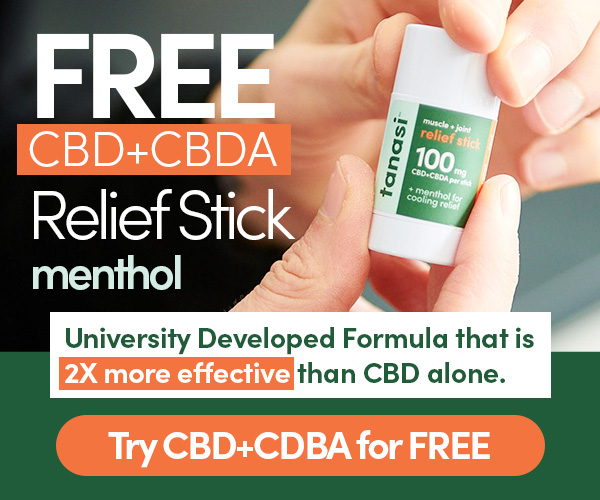Phytocannabinoids – What Are They?
Posted on May 31st, 2023
Cannabinoids, endocannabinoids, phytocannabinoids. Wondering what any of those are? Then, you’ve come to the right article. There is a minor distinction between phytocannabinoids and cannabinoids. See, cannabinoids are a broad class of chemical compounds produced by various biological species. The cannabinoid compounds actually come in two major categories: phytocannabinoids and endocannabinoids. While plants produce phytocannabinoids, mammals produce endocannabinoids.
Today, we’ll talk about phytocannabinoids, since they form the basis of our Tanasi hemp extracts. Basically, the cannabis plant produces cannabinoids known as phytocannabinoids for its survival. The compounds act as a defense against environmental hazards such as harsh weather and insect predators. These phytocannabinoids may also produce effects in your body if you ingest or apply them to your skin. Keep reading to learn more about these compounds, especially CBD and CBDa, the two that unite in Tanasi’s 1:1, patent-pending formulation in all our hemp extracts!
Why Does The Cannabis Plant Produce Phytocannabonids? 
Cannabis plants produce cannabinoids to survive the external threats they face. Marijuana grows in a variety of climates and faces many external threats during its growth process.
Cannabis grows in tropical mountains and cold weather. Phytocannabinoids cover the surface of the plant to protect it from external environmental threats, such as harsh weather and predators. Trichomes are tiny glands that coat the surface of cannabis, and they produce cannabinoid compounds to protect the plant from:
- Loss of moisture in dry and windy conditions.
- Frost in colder weather.
- Insects and other predators.
- Overheating in arid conditions.
- Additionally, they also help attract pollinators for reproduction.
How Do Phytocannabonids Interact With The Human Body?
When you ingest these compounds, or apply them to your skin, you may notice certain effects. Everyone reacts differently to hemp-extracted compounds. So you’ll have to experience them for yourself to know what your interaction will be!
Different Phytocannabinoids In The Cannabis Plant
There are over 500 chemical compounds inside the cannabis plant. CBD and THC are the most prominent chemical compounds present. As such, we know a lot about these two compounds. But we don’t know as much about the others…yetThe role of these lesser known compounds could be more significant than we think. Here are some different cannabinoids in the cannabis plant.
CBD – Cannabidiol
CBD is the second most common chemical compound in the marijuana plant after THC. It is the most prevalent in the hemp plant. In fact, CBD derived from hemp is legal in over 47 states in the US.
Unlike THC, CBD won’t get you high. But it can produce other effects in your body. As such, it’s become a popular ingredient in plant-based supplements like the ones we produce at Tanasi. In our product line, however, we infuse our CBD extracts with a 1:1 formulation including CBDa, because our research shows that combination results in 2x better effects.
THC – Tetrahydrocannabinol
This is the cannabinoid that gives you the “high.” It’s the most common and the most researched chemical compound in the marijuana variety of cannabis plants. Raphael Mechoulam and Yechiel Gaoni isolated the molecule in 1964. THC is intoxicating and psychoactive. It can affect your concentration. And it is still illegal at the federal level in the United States.
CBDV – Cannabidivarin
CBDV has a similar structure to CBD. Researchers discovered this non-intoxicating compound in 1969. Cannabis strains with a high level of CBD contain high levels of CBDV, too. The only problem with the compound is the low bioavailability rate. There is less than 6% reaching your bloodstream when taken orally, and it isn’t water-soluble either.
THCV – Tetrahydrocannabivarin
THCV or Tetrahydrocannabivarin has a similar molecular structure to THC with a low potential for intoxication. It has fewer carbon atoms compared to THC.
CBC – Cannabichromene
CBC or Cannabichromene is the third-most common cannabinoid in the cannabis plant. CBC shares a similar molecular structure to CBD and THC. But the atoms and chemical properties differ in these three compounds. The compound is non-intoxicating, similar to CBD.
CBG – Cannabigerol
Very few people have heard of this cannabinoid, but it is one of the most important chemical compounds in the cannabis plant. Both THC and CBD begin with this compound’s acidic precursor, CBGA. Most marijuana strains contain less than 1% of this chemical compound. In fact, CBG is the building block for many other cannabinoid compounds in the cannabis plant.
THCA – Tetrahydrocannabinolic Acid
THCA isn’t psychoactive like THC. In fact, THCA is the acidic form of THC. It will convert to THC when exposed to heat through the process of decarboxylation. There is an abundance of THCA in cannabis strains high in THC.
CBN – Cannabinol
CBN or cannabinol comes to be when the plant’s THC degrades because of exposure to sunlight and age.
 CBDA – Cannabidiolic Acid
CBDA – Cannabidiolic Acid
CBDA or cannabidiolic acid is the acidic form of CBD and isn’t psychoactive. This compound is prevalent in any marijuana or hemp strain high in CBD in the early stages of plant growth. But the acidic CBDA converts to CBD when decarboxylated. (Exposure to heat or sunlight.)
Like THCA, CBDA is hard to isolate from plants. But at Tanasi, we go the extra mile and include CBDa in a 1:1 ratio with CBD in all of our hemp-extracted supplements. We do this because our research shows that full and broad spectrum supplements with this 1:1 combination are 2X more effective than ones containing only CBD alongside other phytocannabinoids. Try it for yourself and see the difference!
CBGA – Cannabigerolic Acid
CBGA or cannabigerolic acid is the single most important chemical compound in the cannabis plant. It’s actually the precursor to all cannabinoids found in the cannabis plant. That’s why it’s often known as the “mother cannabinoid.”
Without CBGA, there would be no other cannabinoid compounds in the cannabis plant. CBGA is a non-intoxicating compound, but once you heat the cannabis plant materials, this compound converts into many other acidic compounds such as CBDA and THCA. These can then convert into the phytocannabinoids we know and love, such as CBD and THC.
Phytocannabinoids – The Takeaway
Phytocannabinoids are but one of the two categories cannabinoids fall under depending on their origins. However, the fact that they come from a source outside of the human body is precisely why they are useful.
By taking a supplement made up of phytocannabinoids, users might experience effects that they enjoy. While the vast majority of the lesser-known phytocannabinoids potential remains undiscovered, research so far suggests they can be valuable plant-based supplement ingredeients. Therefore, it’s likely we will hear much about phytocannabinoids in the near future.





